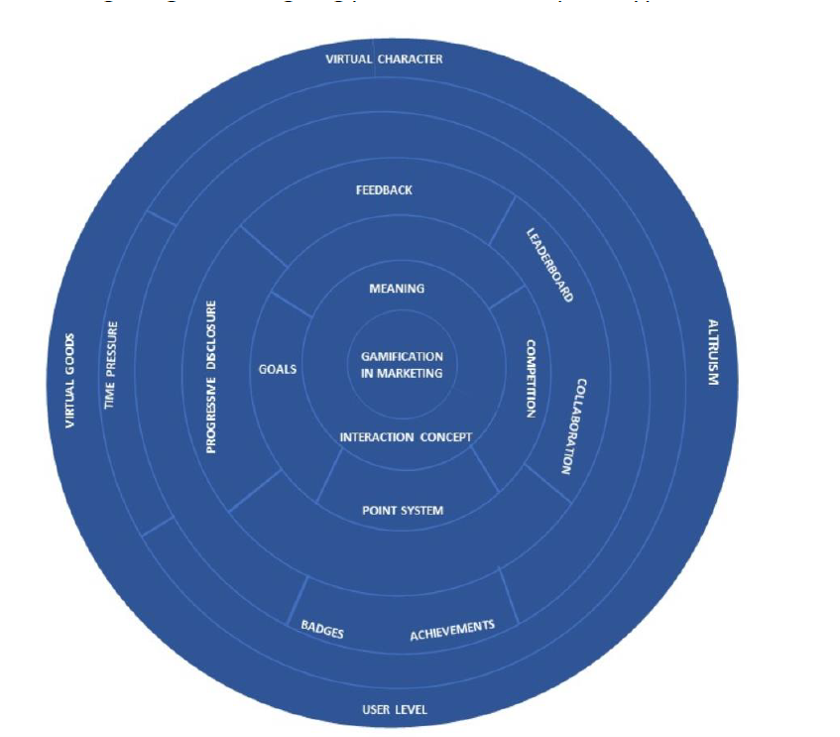The corporate environment may feel quite severe at times, which is generally a good thing as running a business on your own is a serious and responsible job to do. Therefore, most of the time, the environment within the workplace is result-oriented, and it’s easy to lose sight of the broader picture of the company’s primary goal, which is to keep employees and customers engaged and motivated.
Develop a Gamification Strategy
Since Gamification is not a known field or technique, most businesses are not aware of the full potential of Gamification and perhaps less knowledgeable on which elements to use and how to implement relevant aspects.
The following steps could help you implement Gamification more helpfully. Let’s understand the gamification implementation with the help of A Digital company example.

Understand the End Goal
Goal: Engage Potential Customer
Before you begin picking gamification elements, it is critical first to understand your final purpose of using Gamification. Why are you using Gamification? What do you want to achieve with the Gamification?
Assume that A Digital is a start-up company in a marketing business. You could be thinking that this isn’t one of a million ideas, that every other firm offers the same services and which is correct.
A Digital has been in business for many years and is still battling to keep its sales funnel full despite its best efforts. Doesn’t it sound bad? A marketing company failing to promote itself may be due to severe competition, poor strategies, or a lack of a forward-thinking approach. Any reason might be given.
A Digital company plans to use Gamification to engage potential clients. Remember, the core business model remains the same.
Select a Medium & Define your Target Audience
Select a Medium
Like all the business ideas, the first thing that you should fix is a Medium. How and where do you want to use Gamification? What do you want to engage your consumers with? Is it a tool, gamified system, serious game (with Gamification), marketing template, or survey form?
A medium does not have a regional target market but knowing your target audience allows you to plan, design, and gamify better. When you know your consumer, your chances of success are pretty high.
What does A Digital decide?
After in-depth competitor analysis, A Digital decided to implement gamification elements on their website and application.
Gather Requirements
To establish the foundation for the gamified product and implement the gamification concept, requirements from the organization’s perspective, customers, and designers must be put together. You should always gather requirements from the users who will use the gamified system. Going back to our example, in this case, A Digital prepared a set of requirements:
Requirements from a Player perspective:
- Getting motivated
- The system includes social features and interaction
Requirements from an Organisation perspective (RO):
- The system must be user-friendly
- The method comprises serious content
Requirements from the Designer perspective (DC):
- Design must be attractive
- Design elements are deployed properly
- Fulfil Psychological requirements
Select a Gamification Framework
Once you are clear with the gamification goal and all requirements are set, the next step would be to use a gamification framework that assists in implementing the gamification program and achieving a specified purpose.
There are many frameworks available, for example, 6D, Octalysis, etc. These frameworks react to a unique business aim by employing mechanics and dynamics to drive the behaviours associated with the primary objective.

Gamification Elements: Ready, Set, Gamify!
Defining goals, obtaining needs, and so on are typical business activities. If you are planning a Gamification implementation, on the other hand, it is both fun and challenging. Several gamification elements and dynamics are accessible, and determining how many and which game elements to use may be difficult for businesses.
At this point, look back to the goal and requirements and compare them with the framework. The gamification framework should respond to your company’s purpose by using gamification dynamics and mechanics.
Let’s check what A Digital is doing.
A digital selected framework helped them narrow down the selection of gamification elements.
Elements selected by A Digital:
- Feedback
- Goals
- Achievements
- Competition
- Leaderboard
Implementing Gamification is not rocket science, but it must be done carefully (like A Digital did); it requires theoretical knowledge, clear goals, and risk-taking management.
Boost your business with Gamification by using it as a strategy, tool, or bag with lots of elements. After all, Gamification is for everyone if implemented carefully.
The results of using Gamification are impressive and are being accepted by the business with a more positive attitude than in the previous decade.
Learn how Gamification is A Perfect Marketing Tool & How to Engage Customers